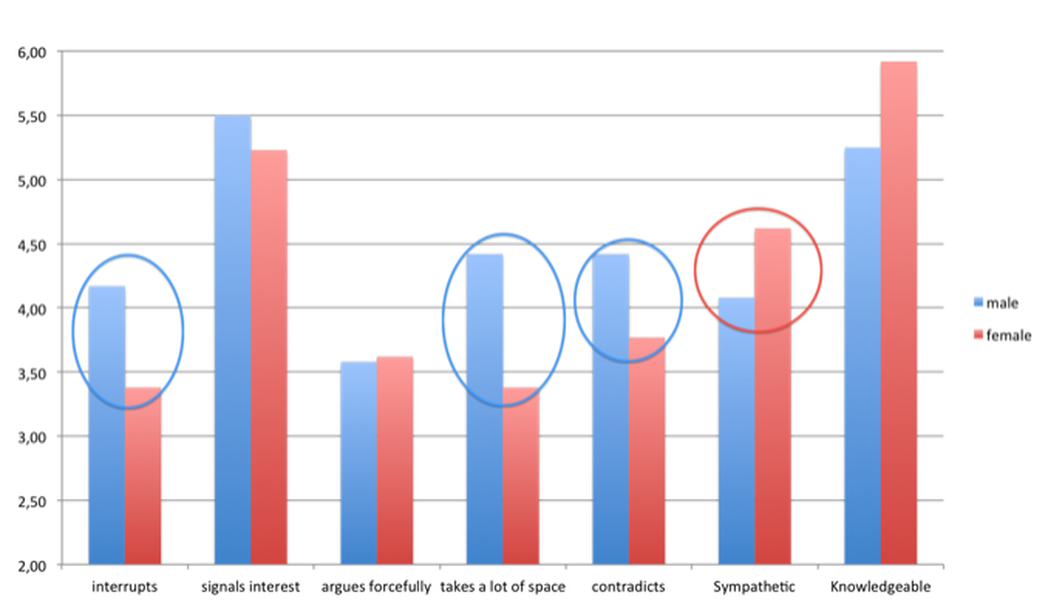Debriefing
|
|
In the revelation of design we have explained the general principles behind matched-guise methodology, and then presented the students with the three versions of the recordings:
We have then presented the results of the responses of the two respondent groups. It is important here that we point out that this is a group average so that no-one risks feeling pointed out for their responses. During the results debriefings we try to highlight differences which are particularly striking in a way that is visually telling (graphs and diagrams for example).
Figure from debriefing with important and large differences highlighted
|

